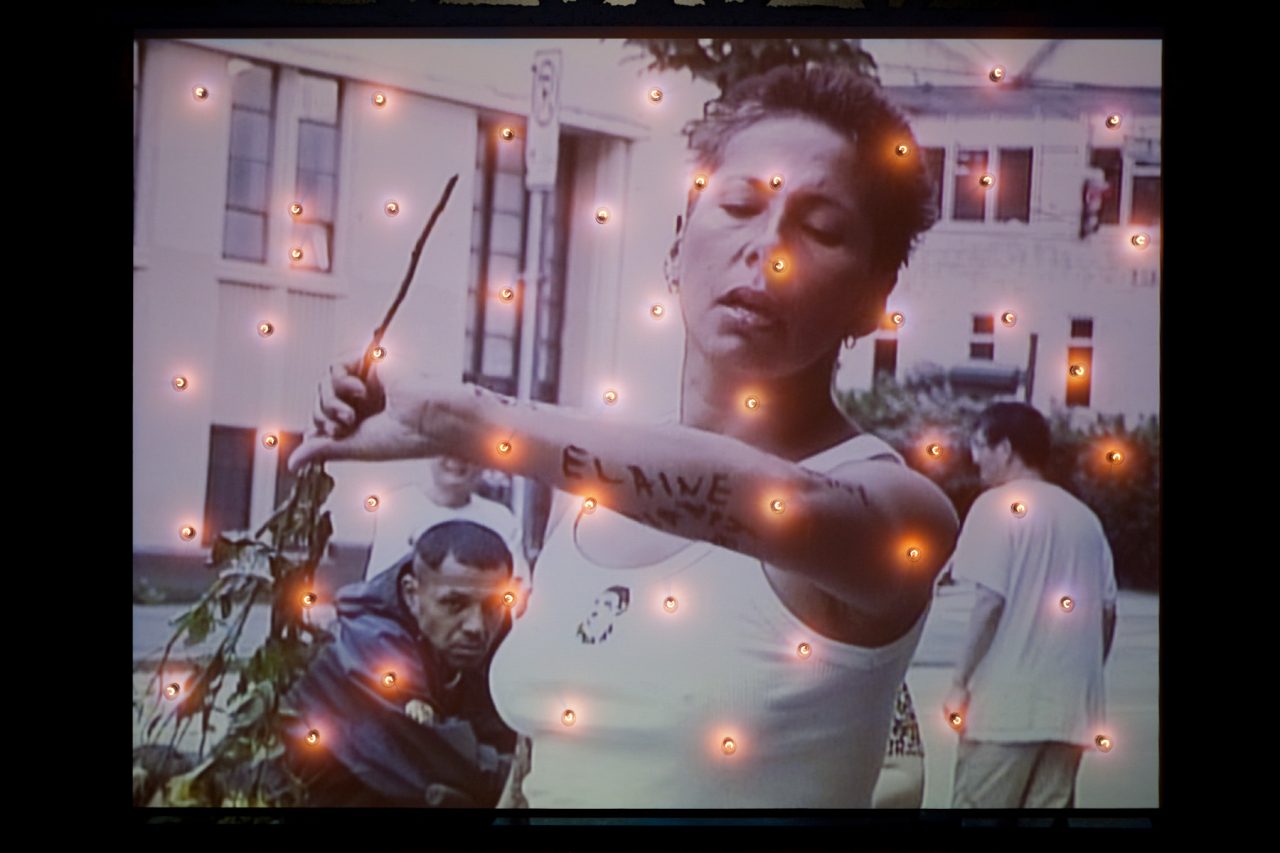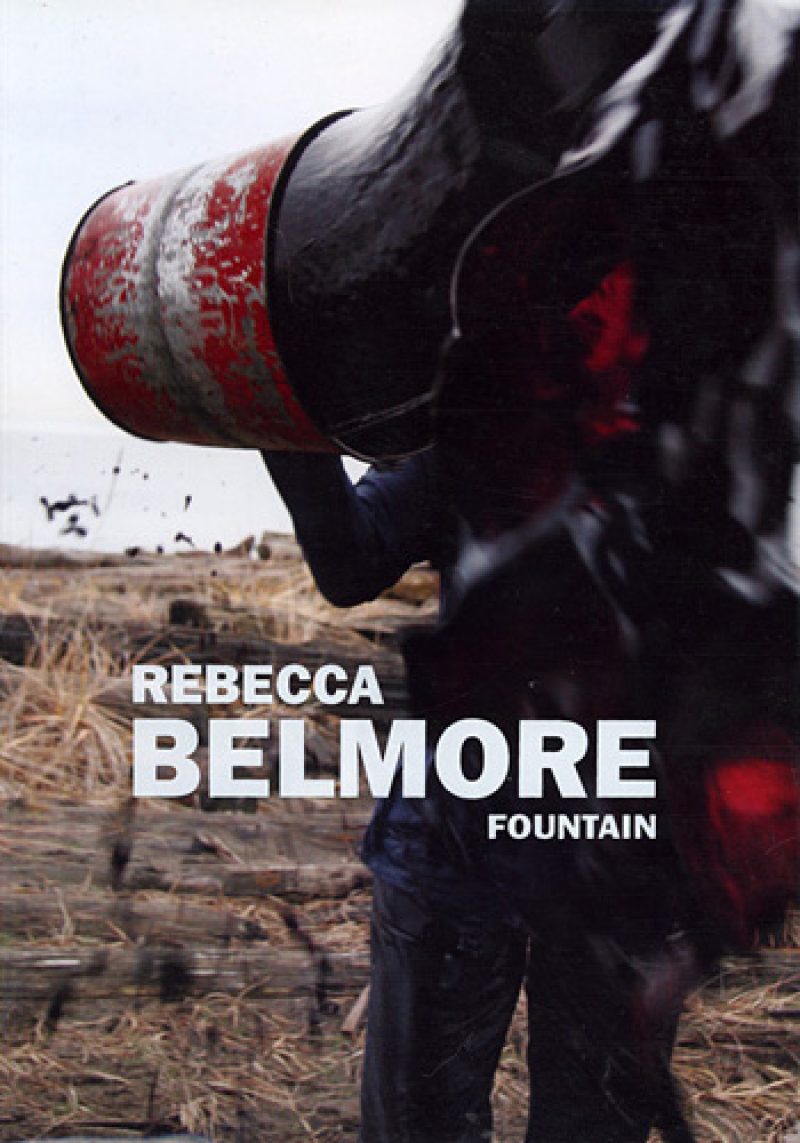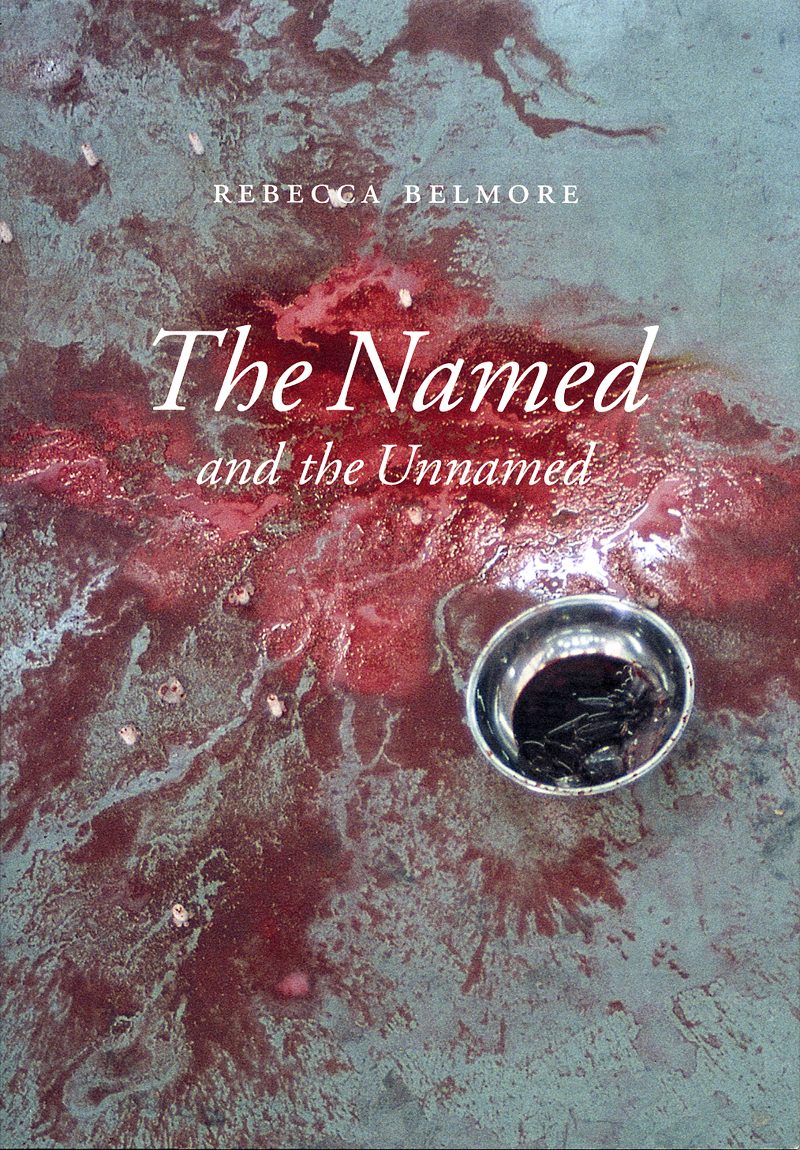12 June 2005 – 6 November 2005
Canada Pavilion, 51st Venice Biennale, Italy
Rebecca Belmore: Fountain
-
Rebecca Belmore
ArtistRebecca Belmore (Lac Seul First Nation (Anishinaabe), b. 1960) is a multidisciplinary visual artist. Belmore is widely recognized for her performance, photographic and sculptural work that makes connections between bodies, land and language with ongoing social and political realities faced by Indigenous communities. Questions of authority, narrative and truth resonate throughout her practice. In 2005 she was the first Indigenous woman to represent Canada in the Venice Biennale. Her work has appeared extensively in exhibitions both nationally and internationally, and her solo exhibitions include the Belkin Art Gallery, Art Gallery of Ontario, and Justina M. Barnick Gallery. Belmore has received numerous honours and awards, including the Hnatyshyn Award (2009), the Governor General’s Award for Visual and Media Arts (2013) and Gershon Iskowitz Prize (2016). She attended the Ontario College of Art and Design in Toronto, and has received honourary doctorates from OCAD University (2005), Emily Carr University of Art and Design (2018), and NSCAD University (2019).
Read More
Vancouver-based Anishnaabe artist Rebecca Belmore was Canada’s official representative at the 2005 Venice Biennale of Visual Art, the world’s oldest and most prestigious venue for the international display of contemporary art. The Kamloops Art Gallery and the Morris and Helen Belkin Gallery, which proposed Rebecca Belmore as the Biennale candidate, were the institutions selected in a nationwide competition to represent Canadian visual arts at the event. The 51st edition of the Venice Biennale opened in June 2005.
Rebecca Belmore’s new work, Fountain, was conceived for the Canada Pavilion at the Giardini in Venice. An image is projected through falling water onto an irregular white rock wall. The projected image is an edited DVD of a video shot cinema-style on an industrial zone beach near Vancouver, Canada. It is a cold, grey winter day, typical of the North American Pacific Northwest in January. The action is in five parts. The artist flails in the water near the shore struggling with a bucket. Next, in a calm state, she kneels and holds the vessel beneath the surface of the water. Then she rises and walks on the shore. After that, she stops and tosses the contents of the pail toward the lens, covering the screen with a sheet of blood. And, lastly, she is seen through the film of blood that fragments and distorts the image. The action has an ambiguous meaning that is associated with awakening and emerging. There is a sense of a task to be done; one of ritual and portent.
Fountain deals with elementals or essences: fire + water = blood. The time is both now, in the industrialized landscape of North America, and in another zone, a time of creation, myth and prophecy. The element of water is represented both as a body of water in the projection and literally as a wall of falling water. Water turns to blood. As befits our times, we don’t know whether this is a metaphor for creation and connectedness or an apocalyptic vision.
Image: Rebecca Belmore, Fountain, 2005. Photo: José Ramón González.
-
Rebecca Belmore
ArtistRebecca Belmore (Lac Seul First Nation (Anishinaabe), b. 1960) is a multidisciplinary visual artist. Belmore is widely recognized for her performance, photographic and sculptural work that makes connections between bodies, land and language with ongoing social and political realities faced by Indigenous communities. Questions of authority, narrative and truth resonate throughout her practice. In 2005 she was the first Indigenous woman to represent Canada in the Venice Biennale. Her work has appeared extensively in exhibitions both nationally and internationally, and her solo exhibitions include the Belkin Art Gallery, Art Gallery of Ontario, and Justina M. Barnick Gallery. Belmore has received numerous honours and awards, including the Hnatyshyn Award (2009), the Governor General’s Award for Visual and Media Arts (2013) and Gershon Iskowitz Prize (2016). She attended the Ontario College of Art and Design in Toronto, and has received honourary doctorates from OCAD University (2005), Emily Carr University of Art and Design (2018), and NSCAD University (2019).
Read More
Related
-
Exhibition
4 October 2002 – 1 December 2002
Rebecca Belmore
Rebecca Belmore’s powerful installations confront the viewer with images of loss, struggle and silence. This exhibition features five new works, created during a residency at the Belkin Satellite over the summer.
[more] -
Exhibition
4 February 2011 – 10 April 2011
Rebecca Belmore: The Named and the Unnamed

The Named and the Unnamed (2002) incorporates a video of Vigil that Belmore performed at the corner of Gore and Cordova Streets on June 23, 2002. The Named and the Unnamed is in polemical commemoration of the women who have gone missing in the downtown east side of Vancouver. It is a reflection on the larger implications of this local event.
[more] -
Publication
2005
Rebecca Belmore: Fountain
 Exhibition catalogue from Rebecca Belmore: Fountain at the 2005 51st Venice Biennale's Canada Pavilion with texts by Scott Watson, Jessica Bradley and Jolene Rickard. Vancouver-based Anishnaabe artist Rebecca Belmore is Canada’s official representative at the 2005 Venice Biennale of Visual Art, the world’s oldest and most prestigious venue for the international display of contemporary art. [more information and purchase]
Exhibition catalogue from Rebecca Belmore: Fountain at the 2005 51st Venice Biennale's Canada Pavilion with texts by Scott Watson, Jessica Bradley and Jolene Rickard. Vancouver-based Anishnaabe artist Rebecca Belmore is Canada’s official representative at the 2005 Venice Biennale of Visual Art, the world’s oldest and most prestigious venue for the international display of contemporary art. [more information and purchase] -
Exhibition
1 June 2002 – 31 August 2002
Artist in Residence: Rebecca Belmore
During the summer months, Rebecca Belmore was invited to use the space of the Belkin Satellite as a studio for producing works that would comprise her solo exhibition at the Morris and Helen Belkin Art Gallery from October 4-December 1, 2002.
[more] -
Publication
2002
Rebecca Belmore: The Named and the Unnamed
 Exhibition catalogue from Rebecca Belmore: The Named and the Unnamed at the Belkin (4 October–1 December 2002) with texts by Scott Watson, Charlotte Townsend-Gault and James Luna. During the summer of 2002, Rebecca Belmore was invited to use the space of the Belkin Satellite as a studio for producing works that would comprise her solo exhibition at the Belkin from 4 October-1 December 2002. The exhibition features five new works created during a residency at the Belkin Satellite. [more information and purchase]
Exhibition catalogue from Rebecca Belmore: The Named and the Unnamed at the Belkin (4 October–1 December 2002) with texts by Scott Watson, Charlotte Townsend-Gault and James Luna. During the summer of 2002, Rebecca Belmore was invited to use the space of the Belkin Satellite as a studio for producing works that would comprise her solo exhibition at the Belkin from 4 October-1 December 2002. The exhibition features five new works created during a residency at the Belkin Satellite. [more information and purchase]